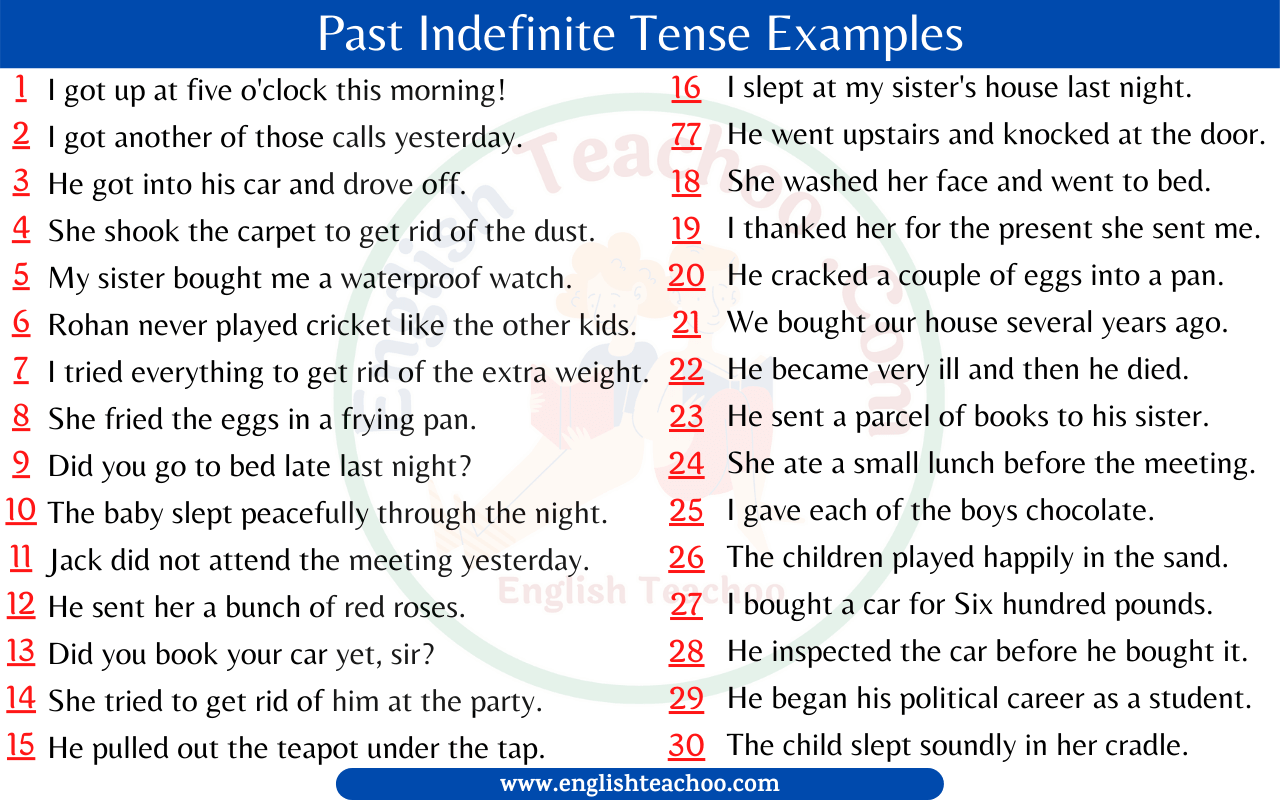
50 Past Indefinite Tense Examples EnglishTeachoo
For example, past Indefinite tense is used to tell stories. In this article, we'll explain how sentences are formed in Past indefinite tense.. Past Simple Tense formula: In the formation of the Simple Past tense, 2nd form of the verb is used. Regular verbs are formed with the infinitive (basic form of the verb) and the ending.
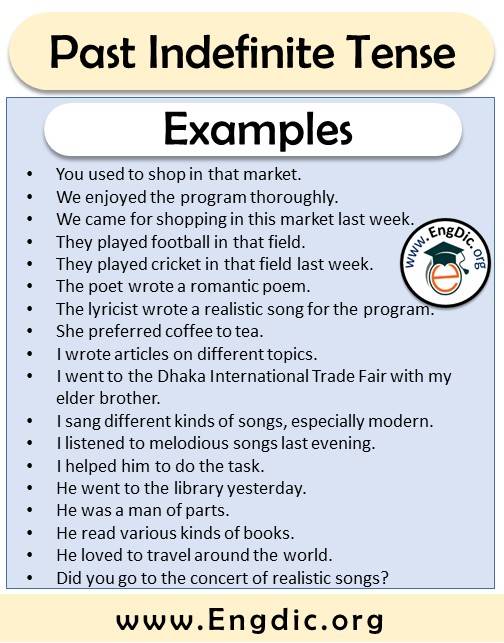
Past Indefinite Tense Formation, Examples Download PDF EngDic
In the past indefinite tense, the impact of the action is ended in past time and not important at the present time. With past indefinite tense, the words like yesterday, before, ago, last, etc., is used. It is also used to tell the past habits. For that, the words like generally, always, often, usually, etc., are used.

Past Indefinite Tense English grammar, Past indefinite tense, Tenses
Past indefinite tense is also known as present simple tense. This tense is used to express actions that have occurred in the past. It states the following two types of past actions. I ate an apple. He caught a bird in the bushes. I met a friend in the market. An action that occurred on regular basis in past. She worked in a factory.

Past Indefinite Tense Formation, Examples Download PDF EngDic
I am reading the grammar book - A Comprehensive Grammar of the English Language - these days. I am confused about the meanings of definite and indefinite in Past Tense and Present Perfect. I know that Past Tense means an action or state started and ended before now. For example: He died.

Easy Way To Learn English Grammar Past Indefinite Tense(Simple Past Tense)
It is used to talk about specific past actions, habits, or states of being that are no longer ongoing. In English, the simple past tense is typically formed by adding "-ed" to the base form of regular verbs. However, irregular verbs have their own specific past tense forms that do not follow this pattern.
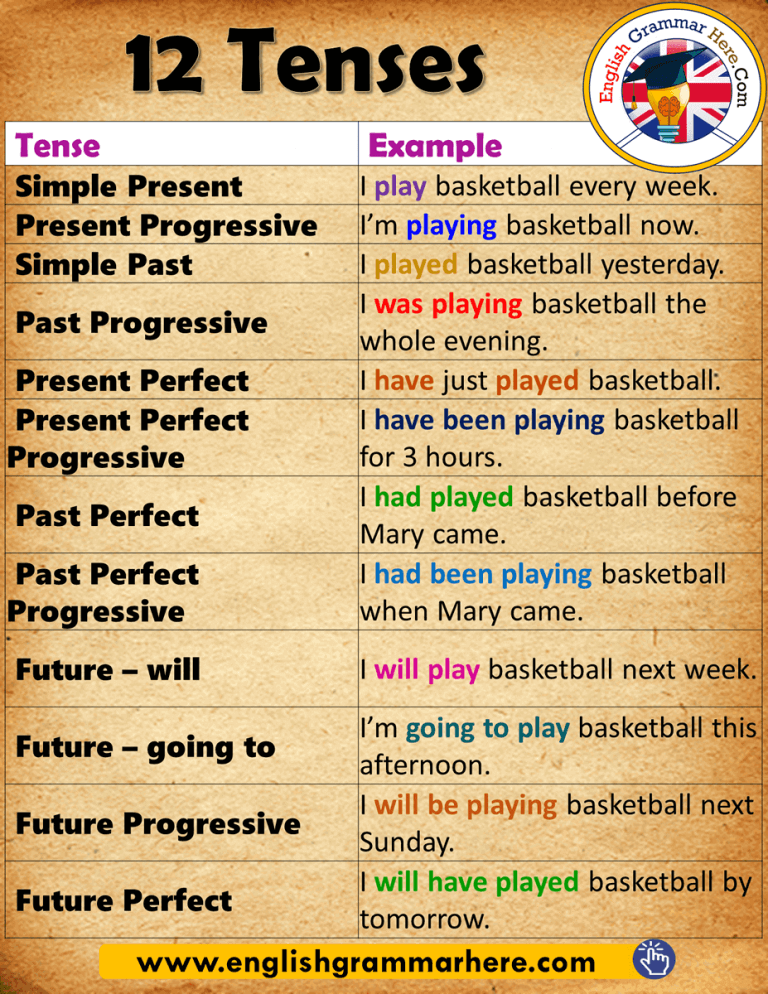
Past Indefinite Tense, English Past Indefinite Tense Examples English Grammar Here
Definition Simple present tense is used to express general statements and describe the usual and habitual acts. It shows the routine work that we perform daily, regularly or always. Formula / Structure Subject + Base form of verb (+ s/es for third person) + object He/She/It + base form (V1) (s/es) They/We + base form (V1) Examples
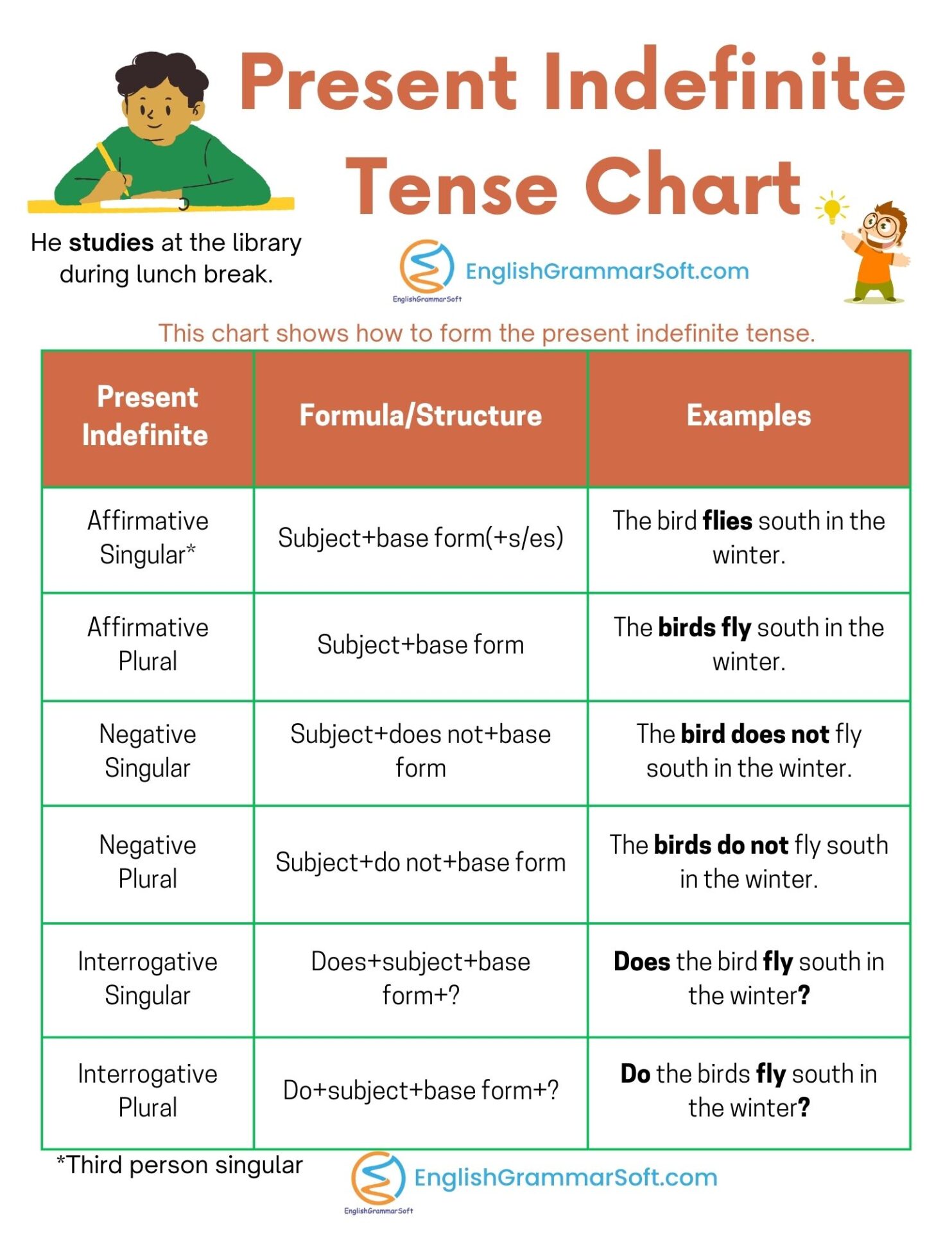
Present Indefinite Tense in English (Rules, Formula, 100 Examples & Exercise) EnglishGrammarSoft
The Past Indefinite Tense is a tense used to express a state or action that occurred in the past. Usually, the exact time of this action or state is not specified in these sentences. Therefore, sentences have an indefinite meaning.

Past Indefinite Tense Rules With Examples VK Study
Formula for Past Indefinite Tense To form sentences in the Past Indefinite Tense, we follow a specific formula. The formula for affirmative, negative, and interrogative sentences in this tense is as follows: Affirmative Sentence Subject + Form of verb 2 + object +.………… (.) Negative Sentence Subject + did not + form of verb 1 + object +.………… (.)

Past indefinite tense or Pas simple tense its uses and examples.
when working in past then we use 2nd form of a verb. In a negative sentence we use "did not" after subject and "first form of the verb. Past indefinite four-step in this tense 1. Simple 2. Negative 3. Question 4. Question Negative. The past indefinite also know as simple past tense. This tense describes what happened in the past.

5 Examples of Past Indefinite Tense Archives Vocabulary Point
The term indefinite direction is used to group all actions at indefinite times. These verbs are past tense, present tense, and future tense. It should be noted here that the appearance of the action is determined by whether the verb expresses a fact, an ongoing action, or an incomplete action. Actions of indefinite dimensions express facts.

Past Indefinite Tense Rule 1 Learn english words, Verb examples, Tenses
Past Indefinite tense definition: The Past Indefinite tense, also known as the Simple Past tense, is used to talk about actions that occurred in the past at a specific time. Always remember, the time of the action, if not already understood, needs to be mentioned as this is an important facet of the Past Indefinite tense.

Past Indefinite Tense Definition, Formula, & Examples GrammarVocab
The simple past tense describes a completed activity that happened in the past. In other words, the activity started in the past and ended in the past. For example: He went. She played. The Simple Present Tense The simple present tense is a complex tense. It is used: The Simple Future Tense
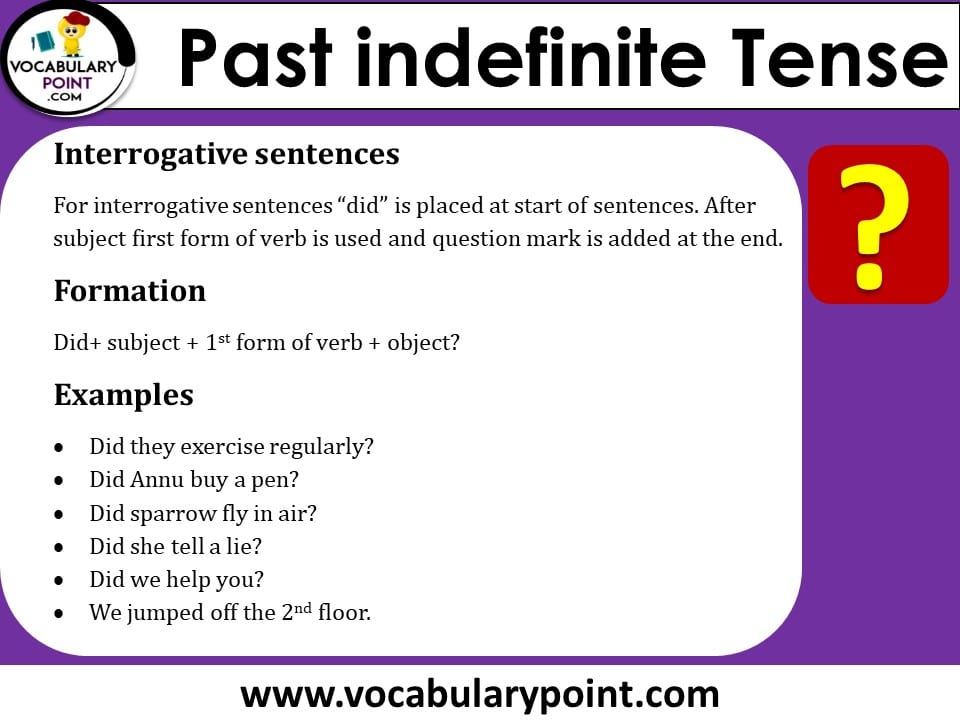
Past indefinite tense examples & sentences Download PDF Vocabulary Point
Past Indefinite Tense Structure, Formula, Examples The past indefinite tense is used to talk about a completed action in a time before now. The time of the action can be in the recent past or the distant past and action duration is not important. With most verbs, the past tense is formed by adding -ed. […]

In Past Indefinite Tense, we use just 2nd form of Verb with He, She, It, I, We, You, They and
The past indefinite is used to refer to something that happened in the past. It is also referred to as 'past simple'; an appropriate name as it is the most basic form of past tenses in the English language. By this, we mean that it follows an uncomplicated structure and takes on a straightforward set of rules.
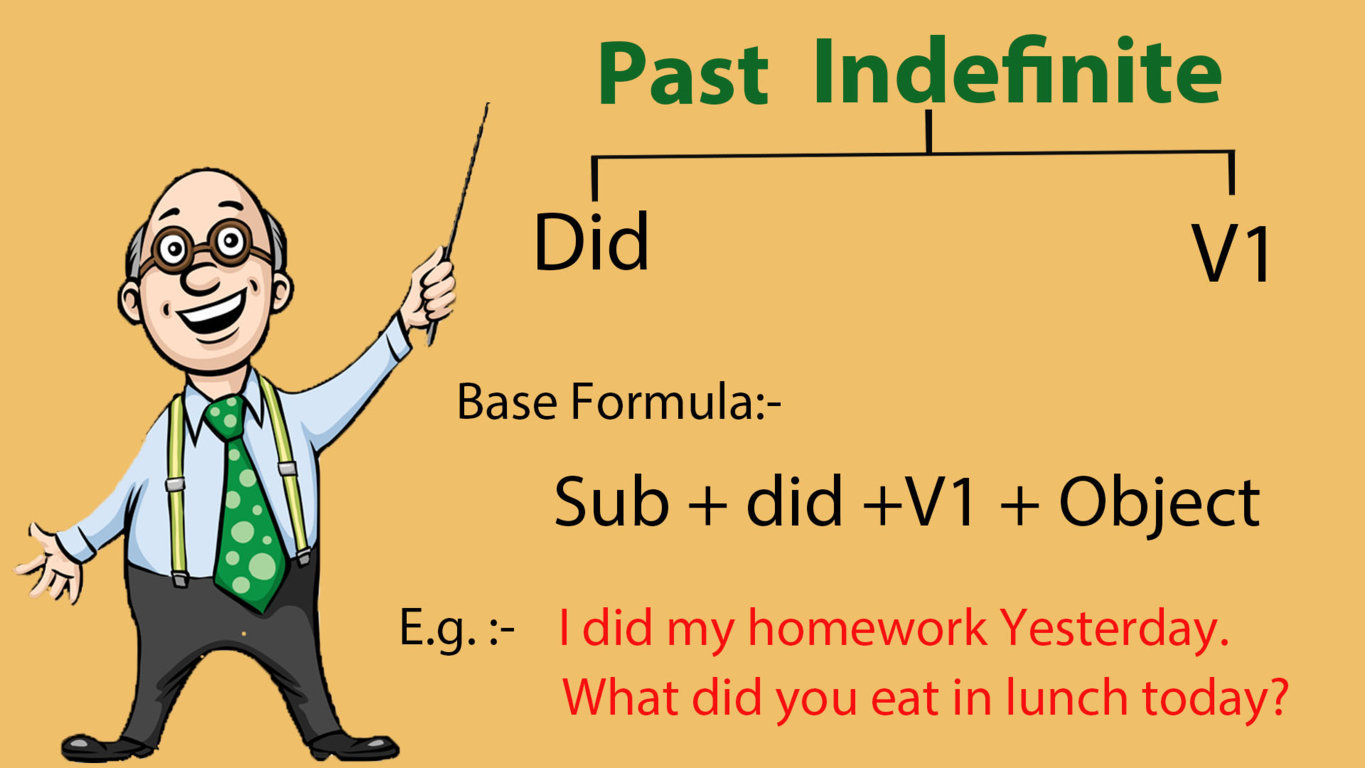
Past Indefinite Tense Learn English Speaking with Englispeaker
A verb is said to be in past tense when the action it is describing has taken place at point in the past. Example: She sang well at the party. This example makes use of second form of verb i.e. sang and thus it indicates that the action is of past. But is doesn't end there.
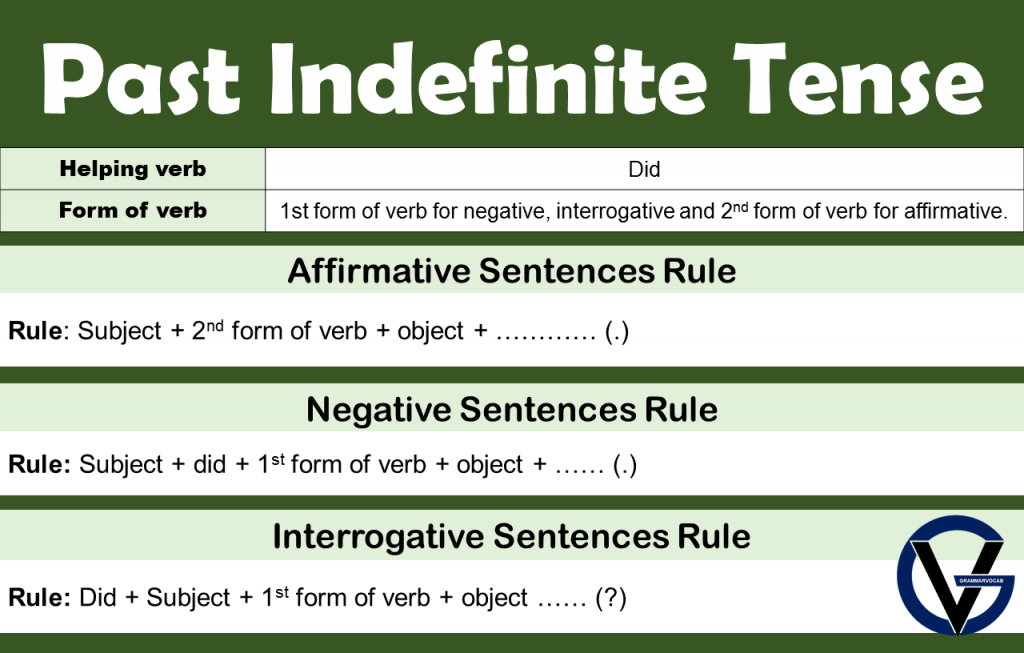
Past Indefinite Tense Definition, Formula, & Examples GrammarVocab
Past tense also has four forms. The past indefinite tense, also known as simple past tense, is used to indicate a finished or completed action/task that occurred/happened at a specific point in time in the past. Structure of Past Indefinite Tense: Subject + verb in the past form + . . . . . + adverb of time + . . . . .